
Artificial intelligence refers to the intelligence demonstrated by machines. Modern day life is dominated by Artificial Intelligence. In machine learning, artificial intelligence mimics a person’s behavior by learning from it and imitating it. Designed to learn and mimic human actions, these machines perform tasks like humans. We can expect that AI technology, as well as other emerging technologies, will have a great impact on our quality of life. All of us are today interested in Artificial Intelligence, whether we are end-users or want to pursue a career in it.
As humans, we tend to think that A.I. is a brand new thing that we are just starting to see on the market. The truth is that A.I. has been around for quite some time and it has been improving since then. It was created to help humans in a variety of ways and the reason it does not work as well as humans is because it lacks emotions. As humans, we learn from our mistakes and our mistakes allow us to learn and grow.
Artificial intelligence has been getting a lot of press lately. The research in this field is always moving forward, with new advances in A.I. being made every day. For example, researchers recently found that A.I. may be better than humans at recognizing facial expressions and emotions. This could have a wide range of effects on business as well as society as a whole.
The 6 ways AI can contribute to saving our planet
In multiple ways, these initiatives are contributing to a cleaner environment, from monitoring brown bear populations to sorting recycling using intelligent robots.
1. Conservation of wildlife
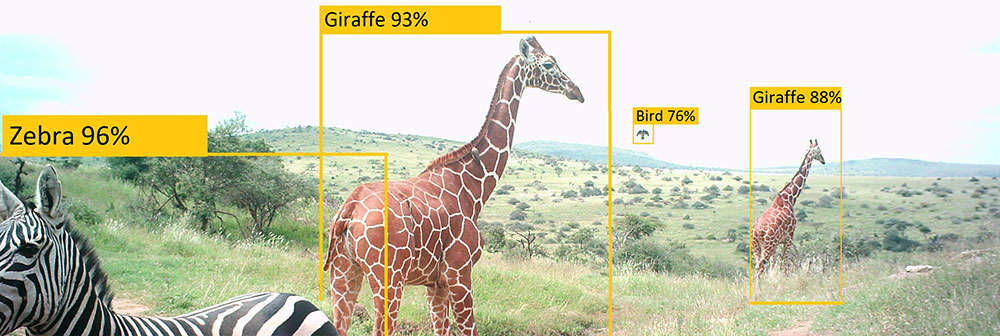
Wildlife populations have decreased by 68 percent since 1970, according to the Living Planet Index developed by WWF. To monitor and slow this alarming rate of decline, the charity advocated the adoption of artificial intelligence (AI) technology.
Sound from wildlife ecosystems can be recorded with weatherproof sensors, which is a very useful application in acoustic monitoring. Birds, bats, mammals, and even invertebrates communicate with sound for navigation, territorial defense, and communication, providing a wealth of information on how a species population is doing. Analyzing hours of recordings for patterns of behavior can be swift and cost-effective using artificial intelligence.
With acoustic listening and machine-learning, Conservation Metrics is monitoring frog populations in Santa Cruz, streamlining water management for improved mate selection, and forest elephant populations in the Central African Republic, securing them from poachers.
When combined with camera traps in the wild, facial recognition technology can be used to track wildlife populations. A new AI application, BearID, is using brown bears from Canada and the United States to identify individuals based on patterns in their facial make-up instead of features, which primates, zebras, and giraffes have. The researchers hope to use this computerized system in monitoring other species in the future.
2. Recyclability improvement
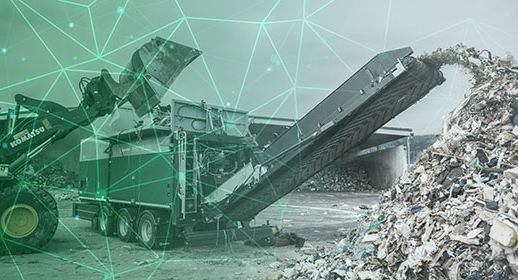
Research from Maplecroft shows that still only 16 percent of the world’s rubbish is recycled each year. Furthermore, a quarter of all waste sent for recycling is actually unrecyclable, which further complicates the process.
In the current era of mixed recycling, many startups are exploring how AI can be applied to enhance recycling. As trash passes on a conveyor belt, an AI-powered robot from AMP Robotics recognizes it quickly using optical sensors. AMP Neuron, the company’s artificial intelligence platform, will sort the product with its robotic arms using different textures, colors, shapes, sizes, and even brand labels.
Continuously updating itself, the AI runs around the clock. Europe will soon be able to use it as well, following the US, Canada and Japan.
An image recognition program designed by Gringgo Tech is helping informal waste collectors in Bali value the different recyclable materials. The pilot study showed an increase of 35 percent in recycling rates. Currently, they are working with Google to build artificial intelligence into the system in order to help automate the process of categorizing waste.
3. Forest conservation
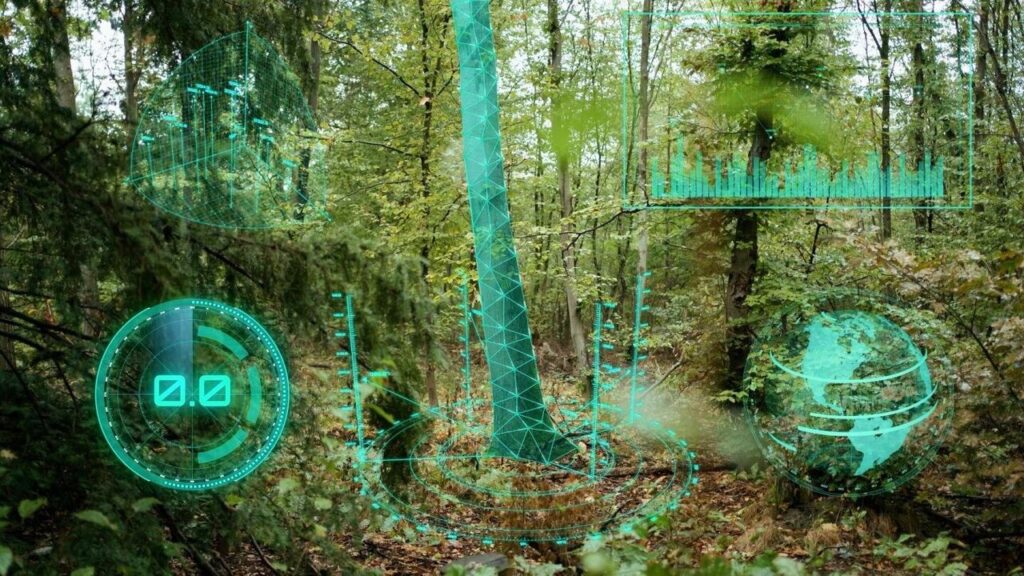
A third of the world’s greenhouse gas emissions are absorbed and stored in forests, which contain 80% of the planet’s terrestrial biodiversity. The International Union for Conservation of Nature says that stopping the destruction of forest ecosystems is essential to achieving the Paris climate change goals.
In order to combat illegal logging, Rainforest Connection uses hidden smartphones that have been repurposed from consumer devices to conduct acoustic monitoring in forests. A real-time analysis of this data is then carried out by the charity using artificial intelligence. In the event of sound detection from chainsaws, logging trucks or gunshots, an alert is sent to rangers. As Rainforest Connection reports, research shows once or twice disrupting illegal loggers causes them to leave and not return until the next logging season.
In its effort to detect wildfires using the internet of things and artificial intelligence, Dryad Networks has received seed funding. Dryad detects gases emitted at the smouldering stage of wildfires, combining real-time temperature, humidity, air pressure, and wind data to alert forest rangers about an upcoming fire. Moreover, there is a plan to build a long-range wireless environment monitoring sensor network to cover entire forests that are not serviced by mobile phones.
4. Air pollution reduction
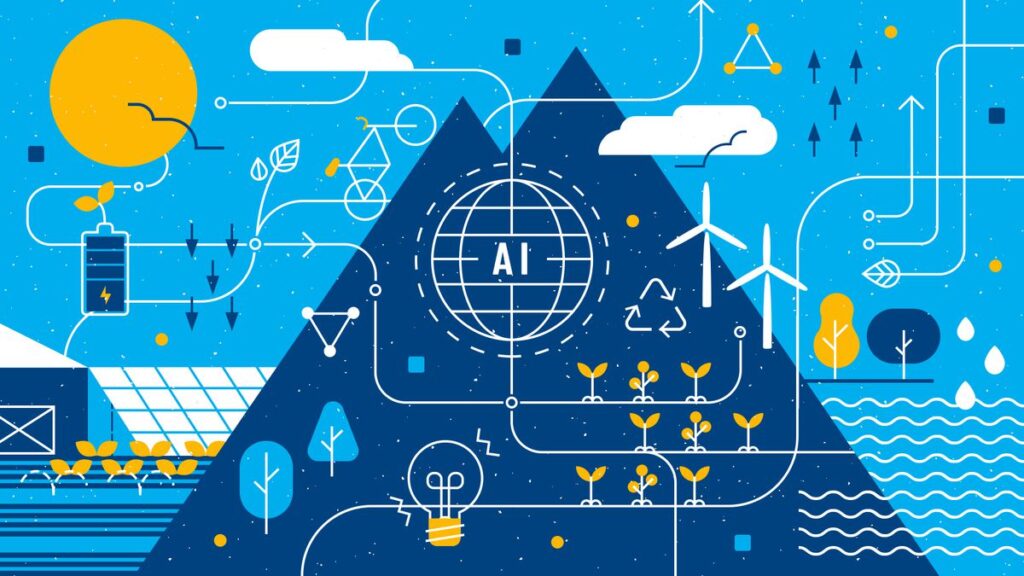
There are 9 out of 10 urban residents breathing polluted air in the world, and so the United Nations created Sustainable Development Goal 16: Access to cycling, walking, and public transportation.
In order to resolve this challenge, Vivacity’s AI technology captures and classifies real-time traffic data with the aim of enabling transportation in cities that is more environmentally friendly. Transport for London and TeamOrigin have been working on determining where new cycling infrastructure should be installed since 2018.
Getting more Londoners cycling and walking, says London’s Walking and Cycling Commissioner Dr Will Norman, will lead to a reduction in congestion and pollution in the city. We believe Healthy Streets should be based on evidence in order to achieve the best possible results.”
Vivacity’s AI has allowed local authorities across the UK to assess the effectiveness of their temporary street layouts to encourage physically active travel during the coronavirus crisis. The company has also helped Transport for Greater Manchester roll out smart junctions across the city, which prioritize pedestrians and cyclists over motor-vehicle traffic.
5. Food waste minimization
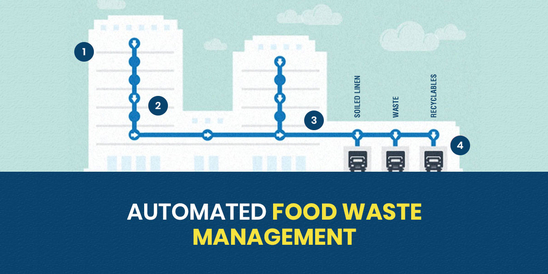
The Waste and Resources Action Programme estimates the UK wastes 9.5 million tonnes of food every year, out of which 70 percent could be prevented. Twenty-five million tonnes of greenhouse gases are emitted from food waste, including food from supermarkets, homes, hospitality, and restaurants.
With its data, Winnow says up to 15 per cent of purchased food is wasted in the hospitality industry. It uses artificial intelligence to recognize discarded food and log the data, and it is taught how to identify it when it’s thrown away. Winnow Vision has been implemented by IKEA stores in the UK, allowing food waste to be reduced by up to 50 percent.
As part of a government initiative, UK supermarkets pledged to reduce food waste by half by 2030. The UK’s eight largest retailers could save £144 million in food waste by implementing AI in their supply chains, which is reflected in data from Blue Yonder. The ability to set up and monitor the environmental impact of goods across the supply chain, along with the areas that need improvement, has resulted in increased understanding of the environmental impact and a better understanding of the areas in which improvements can be made.
6. The reduction of sewage pollution
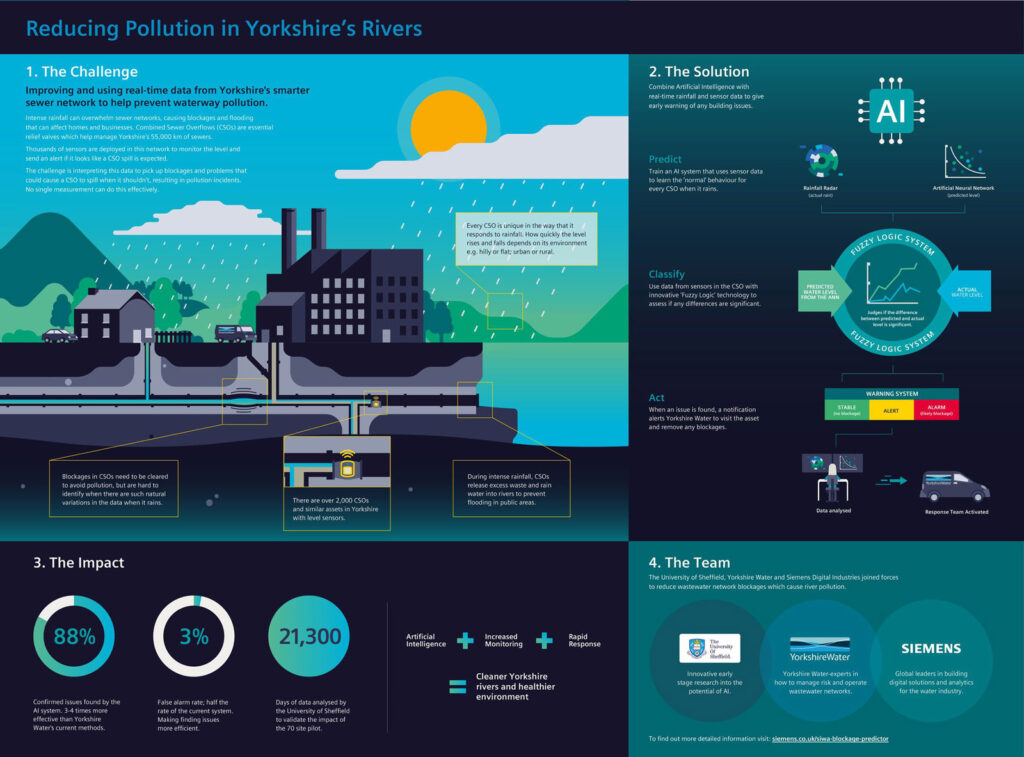
In the UK, almost 3,000 times of raw sewage were discharged onto beaches in the past year, says a report from Surfers Against Sewage. Safer Seas operates an app that alerts swimmers, surfers, and other water users when untreated sewage has been discharged at their beaches. The organization advocates for stricter monitoring of sea and river pollution.
Although the water companies provide their data voluntarily, the app relies on non-reliable data and began as a text alert system in 2010. Surfers Against Sewage this year added a health report feature to their app, encouraging people to share information about beach sanitation issues in real time while also holding water companies accountable for neglecting the beaches. During the year 2020, Southern Water did not release any notifications due to reporting-system errors, but twenty percent of Surfers Against Sewage health reports allegedly came from beaches under Southern Water’s jurisdiction.
The application of AI for seawater quality assessment will make assessments even more accurate in the future. Scientists working with the National Research Foundation of Korea have already demonstrated how neural networks can predict contamination at beaches based on criteria such as rain and sewage discharges, tides, temperatures, wind speed and direction. It says this mission will be carried out through modern machine-learning, with a zero-pollution target by 2040.
Conclusion
Yet it is also capable of saving our planet from global warming and ourselves. Using artificial intelligence, we may be able to measure CO2 level as well as figure out our carbon footprint and predict natural disasters. The use of AI and big data is currently being used for environmental, sustainability projects, such as to prevent forest fires and monitor wildlife.
AI for Earth, a Microsoft initiative, provides funding to address environmental problems. An example of how AI is being used is by The Snow Leopard Trust, which will rely upon AI to count and monitor snow leopards. In a matter of seconds or minutes, artificial intelligence can classify thousands of images. In contrast, replicating the same big data scale classification can take hundreds of ‘human’ hours. Unlike humans, computers do not require sleep, they perform equally well whether or not they drank too many beers the night before, or if they experienced a difficult commute to work. Artificial intelligence operates around the clock.




